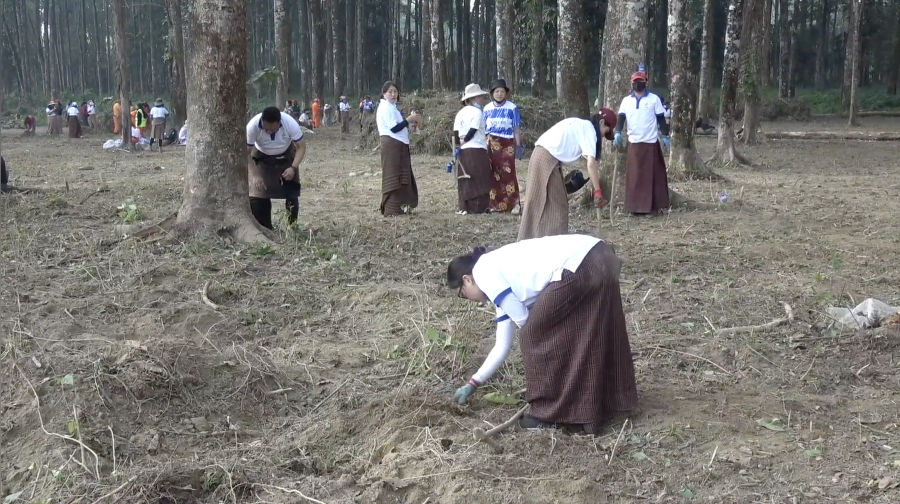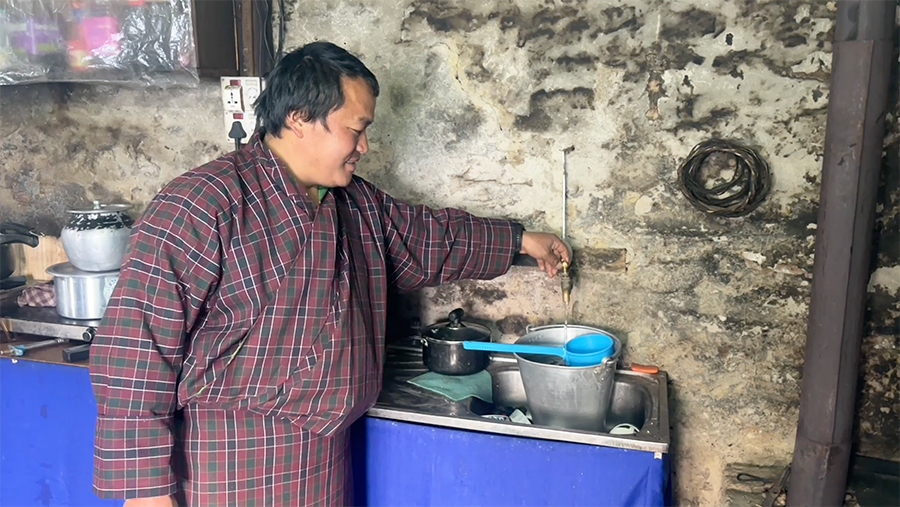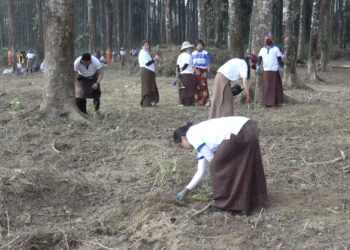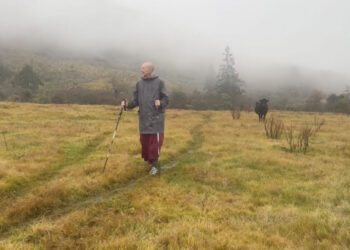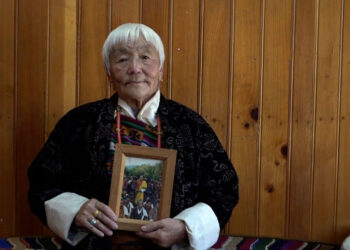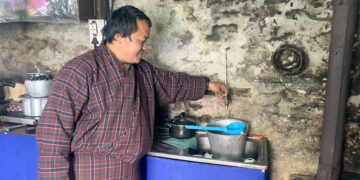Featured News
National Job Fair returns with new focus on long-term careers
After nearly six years, the National Job Fair returned to the capital, with a fresh approach. This time, beyond job...
Ageing population and waning youth interest threaten Dagsa’s Kharphu festival, Monggar
People of Gongdu Gewog’s Dagsa Chiwog in Monggar are struggling to sustain their biennial local festival called Kharphu, due to...
Paro turns up the volume with Bhutan’s first Asia Rock Festival
As prayer flags fluttered in the evening breeze and the sun set behind Paro’s dzong, monasteries and temples, a new...
His Holiness the Je Khenpo concludes spiritual tour
His Holiness the Je Khenpo concluded the almost month-long spiritual tour across the country. Today, His Holiness visited Pedkar Choeling...
Asia Rock Fest–Bhutan marks new era for local rock scene
Bhutan is about to experience something completely new, its first full-scale rock music festival. But this moment did not happen...
British nun Ani Pema Deki completes 400km trek from Haa to Trashigang, raising over Nu 9 M for children with disabilities
Ani Pema Deki, also known as Emma Slade, has completed her 400-kilometre walk across the Trans-Bhutan Trail to raise funds...
Moments with the Great Fourth: memories that still touch Bhutanese hearts
For many Bhutanese, a moment shared with His Majesty the Fourth Druk Gyalpo remains one of the most treasured moments...
His Majesty the Fourth Druk Gyalpo’s timeless vision of happiness still shapes Bhutan’s future
In a world chasing growth through numbers, Bhutan chose to measure something far deeper: happiness. As the nation celebrates the...
JSW Law Graduate makes mark in the U.S., clears New York Bar Examination
A young Bhutanese woman lawyer has made a mark in the international legal arena by passing the prestigious New York...
Thimphu’s YDF hall buzzes with Deaf Week celebration
The YDF Hall in Thimphu came alive today with laughter, music, and the vibrant spirit of inclusion as the Disabled...
Politics
FASTag access for Bhutanese vehicles nears resolution as India submits SOP draft
The foreign affairs and external trade ministry has received a draft Standard Operating Procedure from the Indian government concerning the...
Popular
-
Thimphu Police detain self-proclaimed crypto expert amid 40+ complaints
-
TikToker Dorji Tshomo sentenced for battery against police and De-suung personnel
-
47 students depart for Bangkok under Tongsa Penlop Inspire Programme
-
Paro installs reverse vending machine to tackle growing waste
-
After 2019 halt, Punatsangchhu-I dam construction expected to restart in coming months
Casino en ligne avec mise en argent réel
Choisissez un casino en ligne avec argent réel pour jouer à vos jeux préférés et retirer vos gains en toute simplicité. Avec des options de paiement rapide et un environnement réglementé, vous bénéficiez d’un divertissement sûr et fiable.
TikToker Dorji Tshomo sentenced for battery against police and De-suung personnel
TikToker Dorji Tshomo will remain in prison until July 2028. The Thimphu District Court has sentenced her to two years...
Educators, students and trainees choose service over holiday at GMC
For many students and teachers, this winter break was less about rest and more about responsibility, as they volunteered their...
Thousands of devotees gather in Samtse for 45-day Peling Choekhor transmission
Photo: Lhodrak Kharchu Monastery Thousands of devotees have gathered in Samtse to attend the Peling Choekhor transmission and empowerment that...
Unfinished Pangna–Thangna farm road blacktopping frustrates residents, Dagana
Residents of Thangna Chiwog in Dagana are disappointed after their farm road was excluded from the government’s second phase of...
Zakar
Recent News
- TikToker Dorji Tshomo sentenced for battery against police and De-suung personnel
- Educators, students and trainees choose service over holiday at GMC
- Thousands of devotees gather in Samtse for 45-day Peling Choekhor transmission
- Unfinished Pangna–Thangna farm road blacktopping frustrates residents, Dagana
- National Job Fair returns with new focus on long-term careers
News Category
- Accidents
- Agriculture
- Announcement
- Audience Survey Report
- Business
- Crime/Legal
- Culture
- Development
- Disaster
- Economy
- Education
- Entertainment
- Environment
- Feature
- Featured
- Festival
- Global Peace Prayer Festival
- GMC
- Gyalsung
- Headlines
- Health
- HYDROPOWER
- K4 70th Birthday special feature
- Legal
- Literature
- Livestock
- Media
- Other Stories
- Politics
- RCSC
- Recent stories
- Religion
- Sci/Tech
- Social
- Sports
- Technology
- Textile
- Tourism
- Uncategorized
- Video
- Video Story
- Wildlife
© 2024 BBSCL. All rights reserved.


